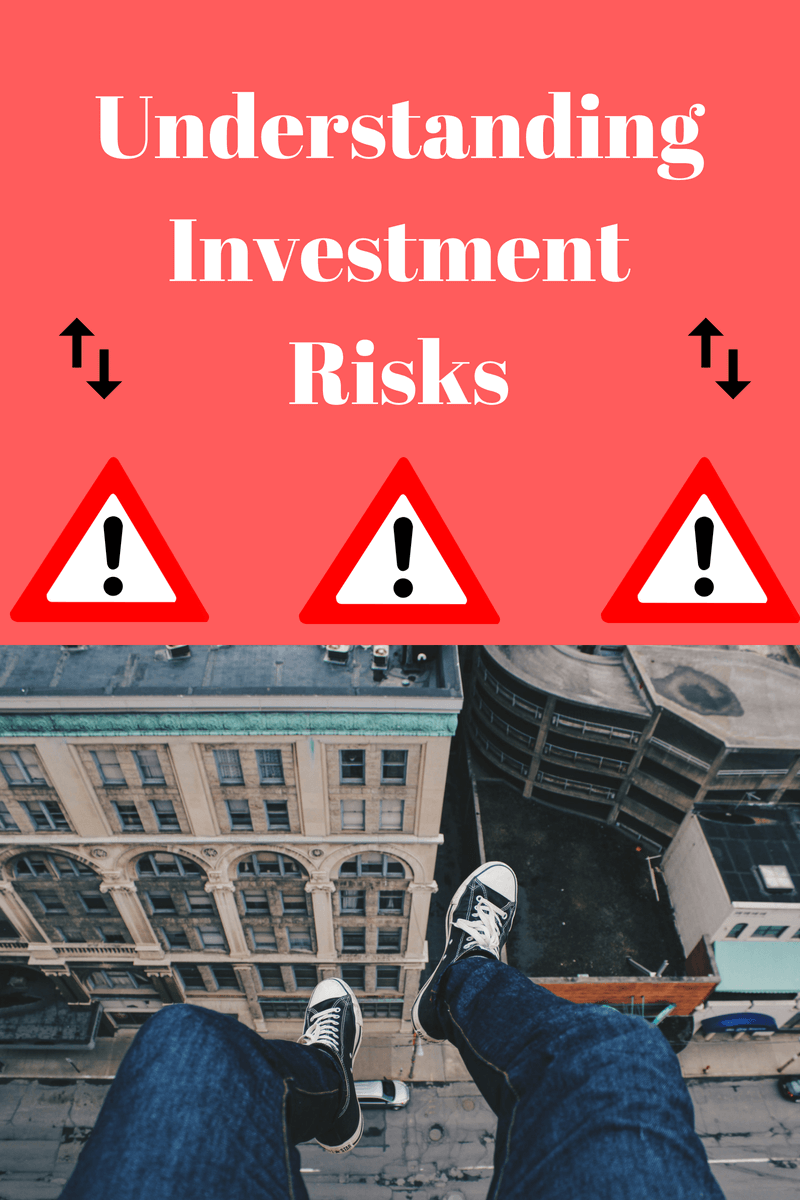In this post, I look at my 3 types of investing risks. If you invest money you are taking on risk in the pursuit of higher returns. A large part of the investing involves determining your personal risk tolerance. The amount of risk you are willing to take to achieve your financial goal will form a central part of your investment plan.
Big 3 Investing Risks
From an investing perspective, the concept of risk has many aspects but for our purposes here I’ll be focusing on what I see as the big three. To be successful at investing, you must successfully navigate your way around all 3 types of investing risks.
Investment Risk
Investing, by its very nature, is inherently risky because there are no guarantees that you will succeed. When it comes to the level of risk that people are willing to take to achieve a certain financial end goal, many think of risk one-dimensionally, in simple terms, such as, “I don’t want to lose any money.”
But the real factor in determining the appropriate level of risk should be the time frame involved. No one wants to lose money but following an investment plan that is too conservative could leave you falling short of your intended financial end goal.

Anyone who invests their money in anything but the safest of assets will at some point “lose” money. Assets rise and fall on a daily basis so it’s important to take the long view. The important thing to remember is that unless you sell, your loss is simply a paper loss.
On the flip side, purchasing an asset after a major price drop, correction or crash tends to be a lot less risky than buying it after a prolonged period of gains.
When we talk about risk, we are not just talking about the potential for losing money on an investment. If you invest only in the safest of assets (cash and equivalents) you won’t “lose” money – at least on paper. You will, however, experience a residual loss of purchasing power over time due to the effects of inflation. So on the one hand, what first appears to be a “safe” investment option will ultimately cost you dearly later on in terms of lost purchasing power.
Inflation Risk
The key thing to remember is that the longer the time frame, the more you need to be concerned about the impact of inflation. Inflation is simply an increase in the cost of living over time. For example, a dollar in purchasing power today will be worth less next year and so on. Over time, inflation erodes your purchasing power.
You may have heard of the Consumer Price Index (CPI). This is the benchmark that measures inflation by comparing the price of a basket of goods and services at two different periods in time. In my opinion, this is not an accurate gauge for measuring inflation because it excludes food and energy prices, which have a greater impact on the average person’s wallet.
As we are all too well aware, food and energy prices have skyrocketed in recent years. So in real terms, inflation is running higher than the 2 or 2.5% level that is targeted by the central bank. The danger that inflation thus presents to long-term investors is that if they are too conservative then they risk running out of money down the road as their investment returns will be insufficient to keep up with the rising cost of living. The 2 major asset classes that have historically kept pace with or even beat inflation have been stocks and real estate.
The Risk of High Investment Fees
The third and final type of risk associated with investing that people need to be concerned with is the risk of high fees. I recently wrote an article about the danger of mutual fund fees but in reality any kind of investment fee can hurt your returns. It could be the case that your investment advisor is charging too much or that you are invested in mutual funds that charge too high a fee. Whatever the case watch out for how much you are paying in fees!
A case in point. Tired of having her money earn a measly 1.5% interest in a safe cash deposit RRSP, a family member recently approached a financial advisor and was sold a long bond mutual fund. The fee on the fund is 2.5%. The advisor’s rationale was that, historically, bond funds average 6.5% a year so even with the 2.5% fee a person would still come out ahead 4%.
There are 2 major problems with this logic. First, this brilliant advisor forgot to mention that average annual inflation runs at 2.5% so take that off of the 4% and now we’re talking about a hefty 1.5% return – or the exact same return that my family member was earning in that safe and secure RRSP.
The second big problem I have with that advisor’s advice is that it ignores investment risk big time. Who in their right mind would put money in a long bond fund now and honestly expect a 6.5% average annual return on that money? Let me explain a bit. We are at record low interest rates and bonds have an inverse relationship to them.
So that means when interest rates inevitably start to rise, bond prices will fall. So now my family member will most likely be looking at a capital loss, but she’ll still be paying that 2.5% fee. Another piece of great financial advice from an investment professional.
Thanks for reading this post on investing risks.
Photo Credit: Photo by Stuart Miles/FreeDigitalPhotos.net
